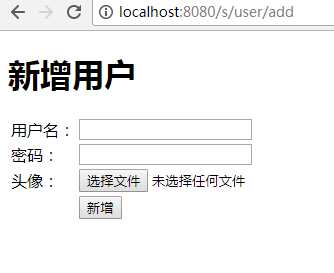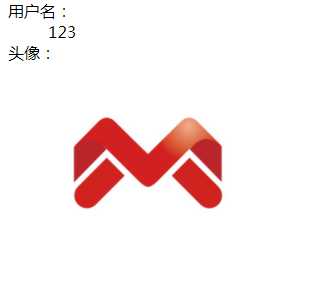标签:指定 value pojo lan dem 集合 不用 xmlhttp 输入
合抱之木,生于毫末,千里之行,始于足下,要想了解spring的文件上传功能,首先要知道spring是通过流的方式将文件进行解析,然后上传。那么是不是所有需要用的文件上传的地方都要写一遍文件解析器呢?
放心,spring这个大管家已经为我们做好了一切!
我们只需要在spring的配置文件中加入下面代码:
<!-- 文件上传解析器 --> <bean id="multipartResolver" class="org.springframework.web.multipart.commons.CommonsMultipartResolver" p:maxUploadSize="152400" p:defaultEncoding="utf-8"> <!-- <property name="defaultEncoding" value="utf-8"></property> --> </bean> <!-- SpringMVC在超出上传文件限制时,会抛出org.springframework.web.multipart.MaxUploadSizeExceededException --> <!-- 该异常是SpringMVC在检查上传的文件信息时抛出来的,而且此时还没有进入到Controller方法中 --> <bean id="exceptionResolver" class="org.springframework.web.servlet.handler.SimpleMappingExceptionResolver"> <property name="exceptionMappings"> <props> <!-- 遇到MaxUploadSizeExceededException异常时,自动跳转到/WEB-INF/jsp/error_fileupload.jsp页面 --> <prop key="org.springframework.web.multipart.MaxUploadSizeExceededException">error_fileupload</prop> </props> </property> </bean>
我们就不用再去在文件的解析上绞尽脑汁了,只需要专注于业务层面的逻辑就好了,是不是很简单?
接下来我们看一个小例子:
html前端代码:
<%@ page language="java" contentType="text/html; charset=UTF-8" pageEncoding="UTF-8"%> <!DOCTYPE html PUBLIC "-//W3C//DTD HTML 4.01 Transitional//EN" "http://www.w3.org/TR/html4/loose.dtd"> <html> <head> <meta http-equiv="Content-Type" content="text/html; charset=UTF-8"> <title>Insert title here</title> </head> <body> <form action="<%=request.getContextPath()%>/user/add" method="post" enctype="multipart/form-data"> <h1>新增用户</h1> <table> <tr> <td>用户名:</td> <td> <input type="text" name="userName" value="${user.userName }" /> </td> </tr> <tr> <td>密码:</td> <td> <input type="text" name="password" value="${user.userPass }" /> </td> </tr> <tr> <td>头像:</td> <td> <input type="file" name="photo" /> </td> </tr> <tr> <td></td> <td> <input type="submit" value="上传" /> </td> </tr> </table> </form> </body> </html>
大家有没有注意到以上代码的form表头中有一行代码:
enctype="multipart/form-data"
没错,想要上传二进制文件,该表头属性必不可少。
controller控制层代码:
package com.wskj.springmvc.controller; import java.io.File; import java.io.IOException; import java.util.ArrayList; import java.util.List; import javax.servlet.http.HttpServletRequest; import org.springframework.stereotype.Controller; import org.springframework.ui.Model; import org.springframework.web.bind.annotation.RequestMapping; import org.springframework.web.bind.annotation.RequestMethod; import org.springframework.web.bind.annotation.RequestParam; import org.springframework.web.multipart.MultipartFile; import com.wskj.springmvc.pojo.UserInfo; @Controller @RequestMapping("/user") public class UserController { @RequestMapping(value="/add", method=RequestMethod.GET) public String addUser(){ return "user/add"; } @RequestMapping(value="/add", method=RequestMethod.POST) public String addUser(Model model, UserInfo user, @RequestParam(name="photo", required=false) MultipartFile photo, HttpServletRequest request) throws IOException{ //对文件进行处理 //判断用户是否上传了文件 //MultipartFile.getSize() : 获取文件的大小(字节:byte) 1024byte = 1kb 1024kb=1mb GB TB PB if(photo.isEmpty() == false && photo.getSize() > 0){ //获取文件的名称 String name = photo.getName();//photo String fileName = photo.getOriginalFilename();//mydata.jpg //获取文件扩展名 String extension = fileName.substring(fileName.lastIndexOf(".")); byte[] data = photo.getBytes();//字节数组 String contentType = photo.getContentType(); /** * 扩展名 Content-Type * .txt text/plain * .jpg image/jpeg * .mp3 audio/mp3 * .mp4 video/mpeg4 */ photo.getInputStream();//获取文件输入流 //保存到磁盘 //保存的路径 //不是 -》 F:\java\workspace\spring\springmvc_fileupload_20170401\WebContent\files //是 -》 x:\apache tomcat-7\webapps\appName\files String savedPath = request.getServletContext().getRealPath("files");//获取files目录的绝对路径 String filePath = savedPath + "/" + fileName; //将文件写入磁盘 photo.transferTo(new File(filePath)); //设置UserInfo.headerPhoto user.setHeaderPhotoUrl("files/"+fileName); model.addAttribute("headerUrl", user.getHeaderPhotoUrl()); } model.addAttribute("user", user); return "user/success"; } @RequestMapping(value="/add2", method=RequestMethod.GET) public String addUser2(){ return "user/add2"; } @RequestMapping(value="/add2", method=RequestMethod.POST) public String addUser2(Model model, UserInfo user, @RequestParam(name="photos", required=false) MultipartFile[] photos, HttpServletRequest request) throws IOException{ //对文件进行处理 if(photos != null && photos.length>0){ List<String> photoUrls = new ArrayList<String>(); for(MultipartFile photo : photos){ //判断用户是否上传了文件 //MultipartFile.getSize() : 获取文件的大小(字节:byte) 1024byte = 1kb 1024kb=1mb GB TB PB if(photo.isEmpty() == false && photo.getSize() > 0){ //获取文件的名称 String name = photo.getName();//photo String fileName = photo.getOriginalFilename();//mydata.jpg //获取文件扩展名 String extension = fileName.substring(fileName.lastIndexOf(".")); byte[] data = photo.getBytes();//字节数组 String contentType = photo.getContentType(); /** * 扩展名 Content-Type * .txt text/plain * .jpg image/jpeg * .mp3 audio/mp3 * .mp4 video/mpeg4 */ photo.getInputStream();//获取文件输入流 //保存到磁盘 //保存的路径 //不是 -》 F:\java\workspace\spring\springmvc_fileupload_20170401\WebContent\files //是 -》 x:\apache tomcat-7\webapps\appName\files String savedPath = request.getServletContext().getRealPath("files");//获取files目录的绝对路径 String filePath = savedPath + "/" + fileName; //将文件写入磁盘 photo.transferTo(new File(filePath)); //设置UserInfo.headerPhoto photoUrls.add("files/"+fileName); } } model.addAttribute("headerUrl", photoUrls); } model.addAttribute("user", user); return "user/success2"; } }
后台根据前段的name属性接收参数,二进制文件类型为
MultipartFile,如果需要接收多个文件,只需要设置成集合然后遍历即可。
接下来是上传成功前段回显的jsp代码:
<%@ page language="java" contentType="text/html; charset=UTF-8" pageEncoding="UTF-8"%> <!DOCTYPE html PUBLIC "-//W3C//DTD HTML 4.01 Transitional//EN" "http://www.w3.org/TR/html4/loose.dtd"> <html> <head> <meta http-equiv="Content-Type" content="text/html; charset=UTF-8"> <title>Insert title here</title> </head> <body> <dl> <dt>用户名:</dt> <dd>${user.userName }</dd> <dt>头像:</dt> <dd> <img style="max-width:300px;max-height:200px;" src="<%=request.getContextPath() %>/${headerUrl}" /> </dd> </dl> </body> </html>
至此,最基础的文件上传测试成功。


但是,在实际项目中,我们可能只是需要启用一个div来进行文件的异步上传,这时我们可以使用html5的新特性formdata实现ajax的提交。
具体代码如下:
jsp前端代码:
<%@ page language="java" contentType="text/html; charset=UTF-8" pageEncoding="UTF-8"%> <!DOCTYPE html PUBLIC "-//W3C//DTD HTML 4.01 Transitional//EN" "http://www.w3.org/TR/html4/loose.dtd"> <html> <head> <meta http-equiv="Content-Type" content="text/html; charset=UTF-8"> <title>Insert title here</title> <script type="text/javascript" src="<%= request.getContextPath()%>/static/jquery-1.10.2.js"></script> <script type="text/javascript"> $(function(){ $("#btnupload").click(function(){ var formdata = new FormData(document.getElementById("form1"));//可以上传文件 //var formdata = $("#form1").serializeArray();//无法上传文件的 alert(formdata); var url ="<%= request.getContextPath()%>/upload/demo1"; $.ajax({ url:url, data:formdata, //name=zhangsan&age=50 {} contentType: false,//默认: "application/x-www-form-urlencoded" processData: false,//设置 processData 选项为 false,防止自动转换数据格式 type:"post", dataType:"json", success:function(data){ alert(data); }, error:function(er){ alert(er.responseText); } }); }); }); </script> </head> <body> <h1>使用Html5提供的FormData实现ajax提交</h1> <h3>浏览器必须支持html5,如果是IE6 - IE8,那就洗洗睡吧...</h3> <form id="form1"> 文件名:<input type="text" name="fileName" /> 文件:<input type="file" name="myfile" /> <input id="btnupload" type="button" value="ajax上传文件" /> </form> </body> </html>
我们可以看见,只需要给要提交的form表单指定一个唯一标识id即可,是不是很方便?
后台controller接收代码:
package com.wskj.uploadfile.controller; import java.io.File; import java.io.IOException; import javax.servlet.http.HttpServletRequest; import org.springframework.stereotype.Controller; import org.springframework.web.bind.annotation.RequestMapping; import org.springframework.web.bind.annotation.RequestMethod; import org.springframework.web.bind.annotation.ResponseBody; import org.springframework.web.multipart.MultipartFile; @Controller @RequestMapping("/upload") public class AjaxController { @RequestMapping(value="/demo1", method=RequestMethod.GET) public String demo1(){ return "upload/demo1"; } @RequestMapping(value="/demo1", method=RequestMethod.POST) @ResponseBody public boolean demo1(String fileName, MultipartFile myfile, HttpServletRequest request) throws IllegalStateException, IOException{ String path = request.getServletContext().getRealPath("files"); path += "/" + myfile.getOriginalFilename(); File file = new File(path); myfile.transferTo(file); System.out.println(fileName+" - 上传成功"); return true; } }
另外还可以使用jquery.form.js实现ajax的上传:
前段jsp代码:
<%@ page language="java" contentType="text/html; charset=UTF-8" pageEncoding="UTF-8"%> <!DOCTYPE html PUBLIC "-//W3C//DTD HTML 4.01 Transitional//EN" "http://www.w3.org/TR/html4/loose.dtd"> <html> <head> <meta http-equiv="Content-Type" content="text/html; charset=UTF-8"> <title>Insert title here</title> <script type="text/javascript" src="<%= request.getContextPath()%>/static/jquery-1.10.2.js"></script> <script type="text/javascript" src="<%= request.getContextPath()%>/static/jquery.form.js"></script> <script type="text/javascript"> $(function(){ $("#btnupload").click(function(){ var url ="<%= request.getContextPath()%>/upload/demo2"; $("#form1").ajaxSubmit({ type:‘post‘, url:url, clearForm:true,//清空所有表单元素的值 resetForm:true,//重置所有表单元素的值 success:function(data){ alert(data); }, error:function(XmlHttpRequest,textStatus,errorThrown){ alert("上传失败了"); } }); }); }); </script> </head> <body> <h1>使用jquery.form.js实现ajax文件上传</h1> <h3>对浏览器没有限制,尽情使用吧骚年们...</h3> <form id="form1"> 文件名:<input type="text" name="fileName" value="我的头像" /> 文件:<input type="file" name="myfile" /> <input id="btnupload" type="button" value="ajax上传文件" /> </form> </body> </html>
后台controller接收代码:
package com.wskj.uploadfile.controller; import java.io.File; import java.io.IOException; import javax.servlet.http.HttpServletRequest; import org.springframework.stereotype.Controller; import org.springframework.web.bind.annotation.RequestMapping; import org.springframework.web.bind.annotation.RequestMethod; import org.springframework.web.bind.annotation.ResponseBody; import org.springframework.web.multipart.MultipartFile; @Controller @RequestMapping("/upload") public class AjaxController { @RequestMapping(value="/demo2", method=RequestMethod.GET) public String demo2(){ return "upload/demo2"; } @RequestMapping(value="/demo2", method=RequestMethod.POST) @ResponseBody public boolean demo2(String fileName, MultipartFile myfile, HttpServletRequest request) throws IllegalStateException, IOException{ String path = request.getServletContext().getRealPath("files"); path += "/" + myfile.getOriginalFilename(); File file = new File(path); myfile.transferTo(file); System.out.println(fileName+" - 上传成功"); return true; } }
当然,使用这两种方法也必须在spring中配置文件上传解析器,这个是上传二进制文件的前提。
标签:指定 value pojo lan dem 集合 不用 xmlhttp 输入
原文地址:http://www.cnblogs.com/fengwenzhee/p/7273197.html